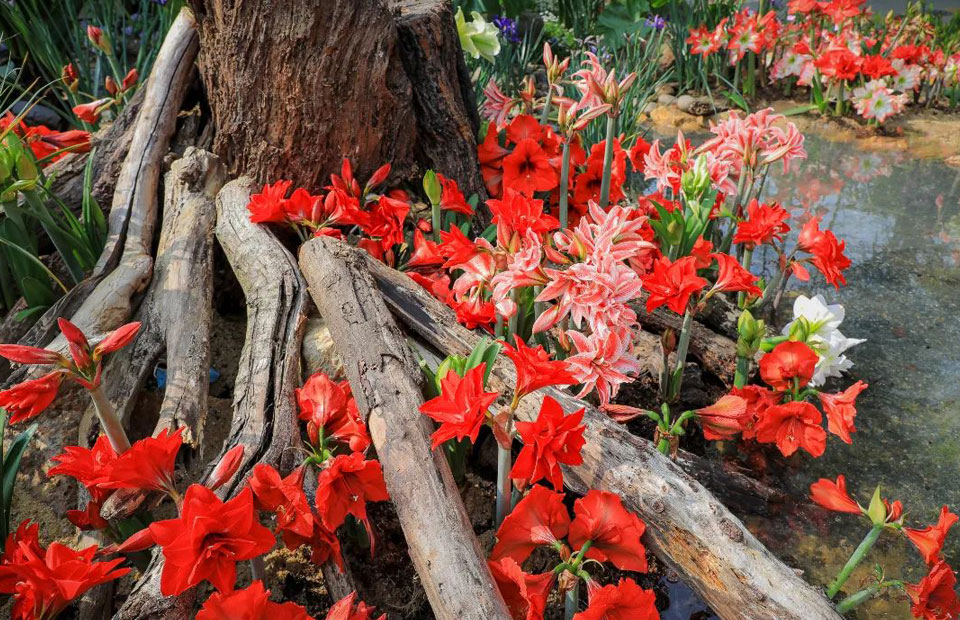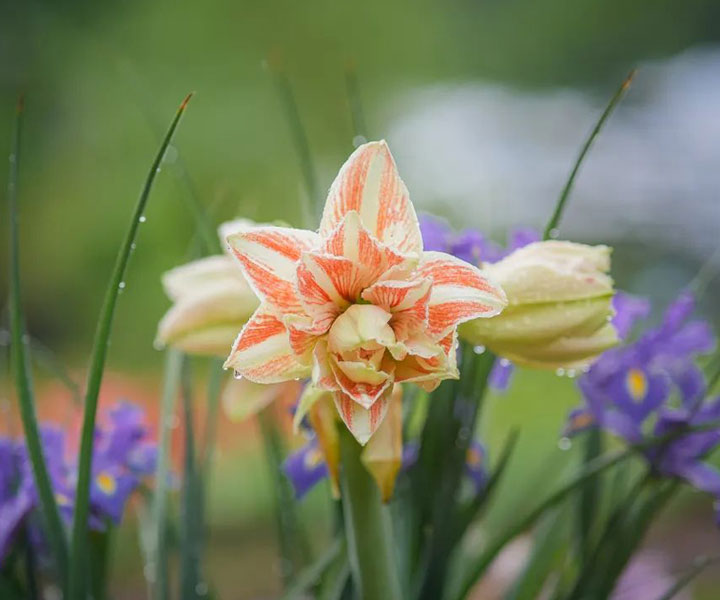Within a hundred years of its arrival in Europe, there were over 100 hybrids of the Hippeastrum. Today we have over 600 hybrids and cultivars. People are fascinated by this flowering plant. Growers have introduced a wide range of colours, larger flowers, rounded or slender tepals, bulbs that produce more scapes or are more tolerant of cold and heat.The continued domestication of wild Hippeastrum species and repeated crossbreeding by gardeners have made it possible for people to enjoy various styles of beauty and a more convenient gardening life.
Hippeastrum arrived in China around the mid-20th century. Step by step, they have become an element of the festive atmosphere from winter to spring. Our daily lives are enriched by a variety of exotic plants. For instance, the bougainvilleas originate in South America and now decorate our cities everywhere with bright colors. The royal poinciana trees that were introduced from Africa and now are a symbol of graduation season in eastern Asia. Plants and their flowers have become deeply ingrained in our civilization. Humans have the power to transform the planet’s landscape. Still ultimately, biodiversity is a precious gift for us. These plants and humans met and shared evolutionary history on our only home-Earth. Their life has been given special meaning, and we have been blessed with beauty in our lives.
Many hybrids and cultivars of Hippeastrum are well adapted to the climate in south of the Nanling Range of China. Blooming leisurely on balconies and in courtyards, not unlike those of their sibling still living in the Andes. In addition to their exuberance, Hippeastrums are resilient and perseverant.







